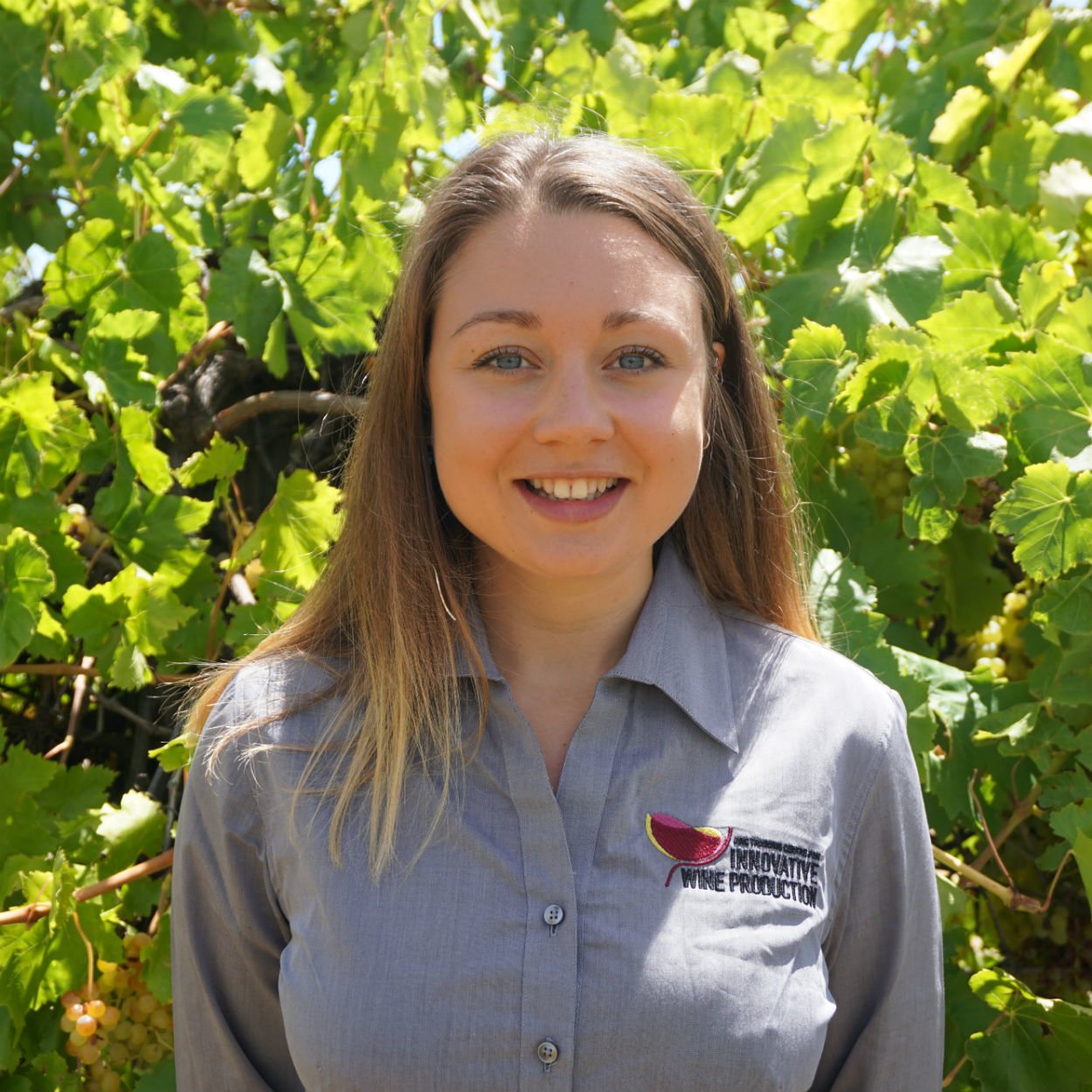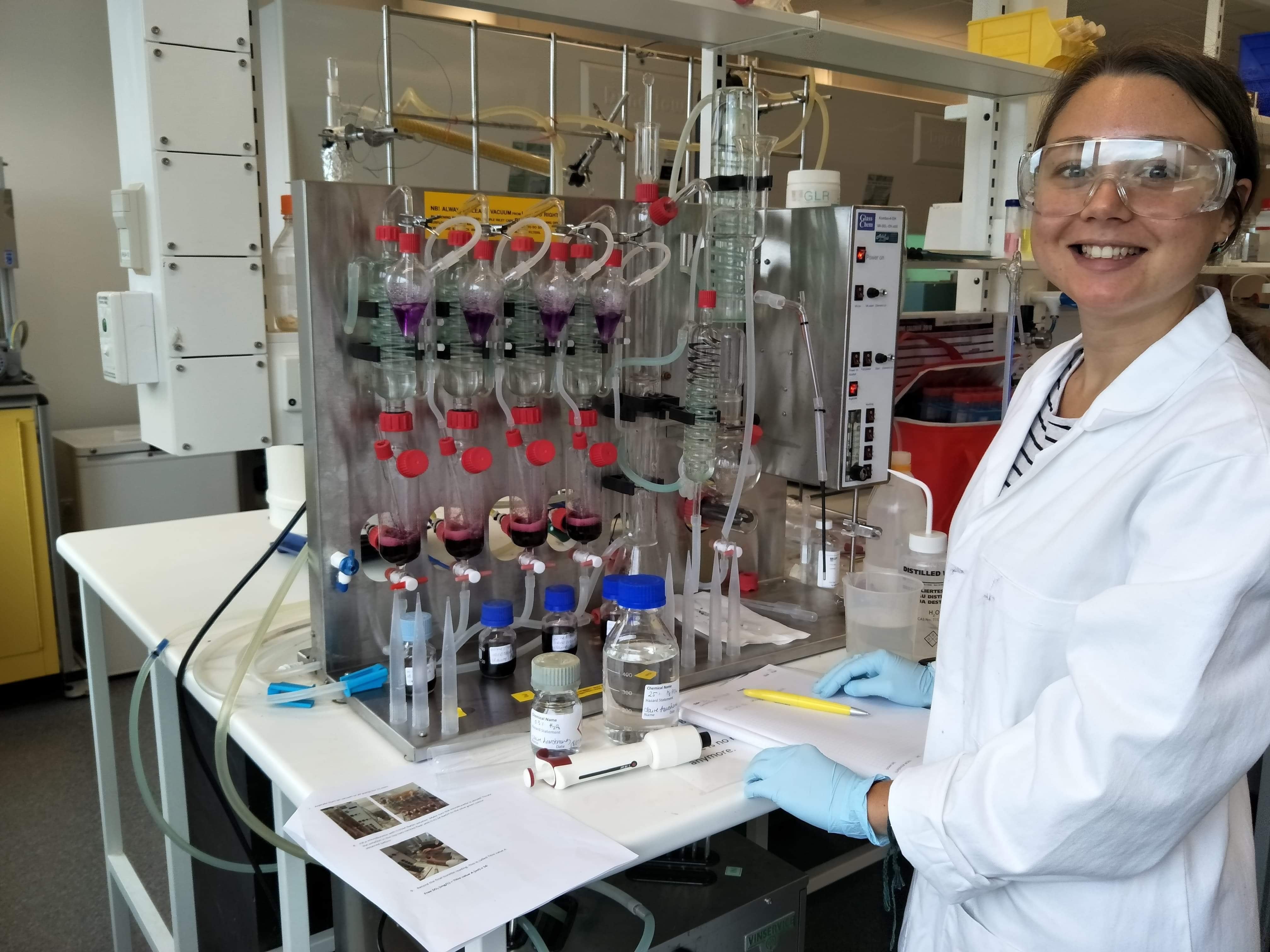Could you tell us a bit about yourself and your academic background?
I was born in Perth, Western Australia but moved to Edinburgh, Scotland when I was seven. I finished my Honours degree in Chemistry with Medicinal Chemistry from the University of Glasgow in mid-2018 and flew to Australia a couple of weeks after graduation.
 I was ski instructing in Perisher, NSW when I was accepted on to the postgraduate course! I spent my summers throughout my degree as a research assistant to a PhD student at Moredun Research Institute in Edinburgh working on the transmission of Cryptosporidium parvum infection in calves and thoroughly enjoyed my time there, conducting experiments and working collaboratively. However, my passion is in wine and chemistry so it was wonderful to find my project here in Adelaide.
I was ski instructing in Perisher, NSW when I was accepted on to the postgraduate course! I spent my summers throughout my degree as a research assistant to a PhD student at Moredun Research Institute in Edinburgh working on the transmission of Cryptosporidium parvum infection in calves and thoroughly enjoyed my time there, conducting experiments and working collaboratively. However, my passion is in wine and chemistry so it was wonderful to find my project here in Adelaide.
I enjoy wine research because it involves working on problems that will lead to applications for the wine industry. I really appreciate that the research allows me to apply both my chemistry and biology knowledge and further develop my research skills which could open a lot of doors for the future.
Could you introduce us to your project and what it involves?
Project title: Managing Berry Heterogeneity
My project is investigating grape variation in the vineyard, understanding how grape variability impacts the quality of wine, as well as exploring the use of vineyard management techniques to lessen grape variability. I will be out in the vineyard throughout berry development, tracking grape variability in terms of size, total soluble solids, skin anthocyanin content and skin tannin content and how management techniques such as foliar sprays, irrigation and crop load effect these maturity and quality parameters.
 I am also going to be in the winery making wine with varying levels of grape maturity blends. I will then be in the laboratory comparing the wine chemical composition and sensory attribute scores to investigate the impact of grape heterogeneity on wine quality. Next year I’ll look at vineyard management practices and how to reduce the variability and the ways this gets transformed to the wine.
I am also going to be in the winery making wine with varying levels of grape maturity blends. I will then be in the laboratory comparing the wine chemical composition and sensory attribute scores to investigate the impact of grape heterogeneity on wine quality. Next year I’ll look at vineyard management practices and how to reduce the variability and the ways this gets transformed to the wine.
For this project, so far, we have taken samples from the vineyard throughout development to try to track the variation in terms of these maturity parameters. When it comes to wine making, we sorted the berries depending on their density which relates to the total soluble-solid content and then we performed some chemical and sensory analysis.
The potential outcomes are that we will gain a better understanding on how variation in grape maturity affects consumer preference for wine, also to understand how to reduce variation in the vineyard to have a consistent wine style from the same vineyard.
What can you see yourself doing in the future?
Once I complete my PhD I will probably disappear into some mountains to ski for a wee while before re-emerging and committing to further research in the field. Later on, I would really like to investigate the relationship between grape maturity, quality and variation and how that translates to wine which will take years of data collection and analysis!
